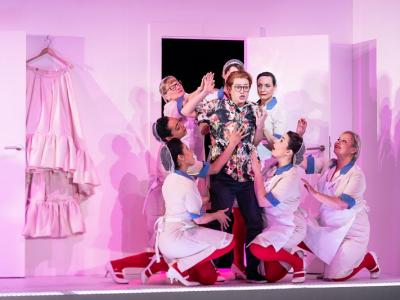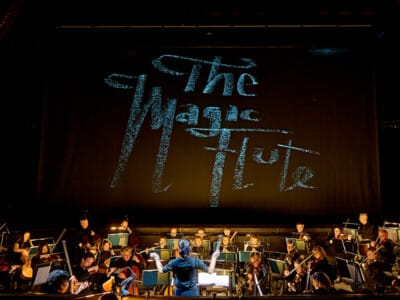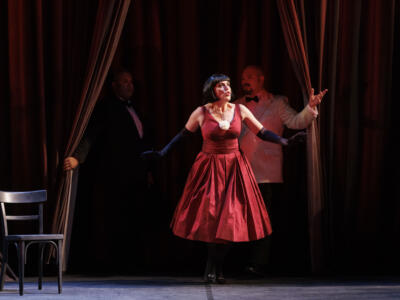Opera’s Greatest Soprano Roles
We’ve taken a look at some of the most demanding and beautiful roles in the repertoire that challenge even the best sopranos.
Violetta – Verdi’s La traviata
Video
Nineteenth-century audiences believed that La traviata’s leading lady not only had to have the stamina and power to sing the role, but must also look the part. Something that Verdi’s first Violetta, Fanny Salvini-Donatelli, learned the hard way. Fortunately, modern day audiences put far less pressure on the soprano to appear ‘consumptive’.
Violetta’s first aria ‘Is it he my lonely heart chose’ (‘Ah fors’è lui’) is the first time we see her vulnerability in the opera. As she considers Alfredo’s proposal, Violetta uses recitative and melisma (a group of notes sung to one syllable of text) to highlight her inner conflict with her situation.
As her mood changes, her Act 1 aria flows into her dazzling coloratura showpiece, ‘Forever free’ (‘Sempre libera’), her most famous aria from the opera, ending in an impressive high E flat. The aria is also well known for featuring in this scene in Pretty Woman.
Lucia – Donizetti’s Lucia di Lammermoor
Video
Bel canto (beautiful singing) opera roles are notoriously challenging and Donizetti’s Lucia is no exception. Bel canto is an operatic style of singing, which flourished in Italian opera in the 18th and 19th centuries. As with many bel canto operas, the singing requires show-stopping high notes, long arias, and the ability to match register and tone of the voice to emotions.
Depicting the title role’s descent into madness, Lucia di Lammermoor’s famous third Act mad scene is taxing both physically and emotionally on the title soprano. In order to show Lucia is pushed to her limits, Donizetti requires the soprano to switch between high and low registers in rapid succession.
As is the style of bel canto, the soprano must also convey her growing hysteria, and so be able to act just as well as she can sing.
The Queen of the Night – Mozart’s The Magic Flute
Video
The use of Masonic symbolism in The Magic Flute has been much speculated over the years. It is thought that Mozart, a Freemason, went as far as basing his opera’s villain, The Queen of the Night, on the Austrian Empress, Maria Theresa. The Empress – mother of Marie Antoinette – ordered the closure of all Freemason lodges during her reign, forcing masons to go into hiding for nearly twenty years.
There’s no better-known aria that shows off the soprano voice than The Queen of the Night’s Act II aria ‘Der Hölle Rache’. Best-known for the fast repetition of a high C and reaching several top F’s, this aria challenges even the best sopranos. Mozart wrote the role for his sister-in-law, Josepha Hofer. The soprano clearly thrived singing the demanding, and hair-raising, coloratura, singing the role for ten years, finally stepping down in 1801, aged 43.
Norma – Bellini’s Norma
Video
Considered as one of the most demanding soprano roles ever written, Bellini’s title role was described by German Soprano, Lilli Lehmann, as more difficult than all three Brünnhilldes of Wagner‘s Ring cycle combined. Regarded as one of the bel canto greats, Norma’s vocal score is long and very exposed. The soprano has to hit sustained high C’s over a dozen times, have limitless breath control, and be on the stage for the majority of this three and a half hour piece.
Norma is not just a priestess; she is a mother, a lover and a warrior, all of which require different emotions – love, jealousy, hatred. Not only must the soprano sing to convey these emotions, she must act them too. Norma’s Act I aria, ‘Casta Diva’, a poignant and tender prayer for peace, is one of the best-known pieces from the opera.
The High Priestess inspired many of Verdi’s heroines, and Wagner himself expressed desire that Isolde would become his Norma, highlighting just how iconic Bellini’s creation really is.






